Autumn: It’s toadstool season!
Photographs of the beautiful fungi I have spotted recently.
Every Autumn I look forward to the emergence of toadstools or the fruiting bodies of the vast fungi networks that surround us all. Fungi are remarkable organisms, and play a range of very essential roles in the environment.
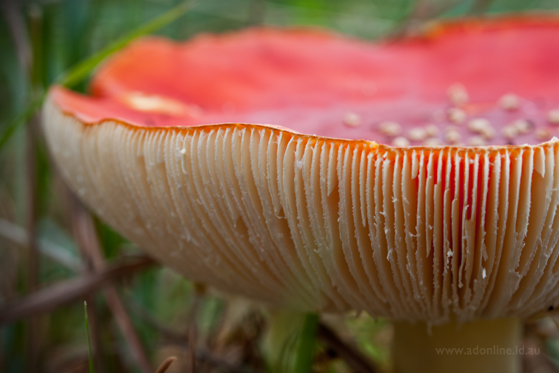
Amanita muscaria forms a beneficial relationship with pine trees, and hence the two will often be seen together.
In a horticultural context, most fungi are either beneficial or harmless in the garden, so I never understand the preoccupation of some gardeners with removing them. Picking toadstools and expecting the fungus to die is no more effective than removing the apples from an apple tree and expecting that to die! This is because toastools are merely the fruiting bodies of the fungus. The rest of the organism is usually hidden underground in the form of strands called hyphae.
Some fungi are saprophytic, meaning that they live on dead or decaying plant matter and return nutrients to the soil. Others are symbiotic, meaning that they form a beneficial and mutual relationship with plants whereby both the plant and the fungus benefit. Within this category, fungi may either be michorrizal (growing in or around the root cells) or endophytic (growing within the leaves and branches).
Unfortunately my mycology (study of fungi) is quite poor, and hence I cannot identify most of the fungi that I see.
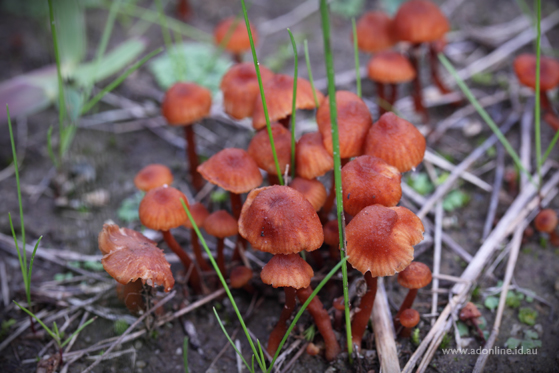
I have no idea what this species is, but the cluster is pretty.
This year, the toadstools have been especially prolific in Melbourne, on account of the cold and wet summer which hjad been followed by an early and wet winter. (Autumn seemed to last for a week this year!).
Here are some photographs of some of the specimens I have seen during Autumn 2011. Enjoy!
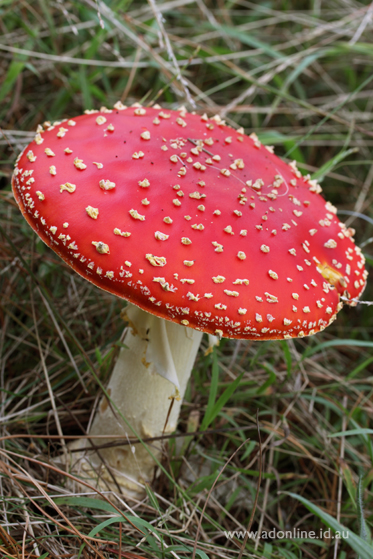
Amanita muscaria is one of the most-recognised fungi. This species forms a symbiotic relationship with pine or birch trees… which is why you will only find this species growing beneath these species. The fungus helps the tree collect nutrients from the soil, and in return the pine provides the fungus with carbohydrates.

This is Astraeus hygrometricus, a species I’d never noticed before. I have written ‘noticed’ because these look like pebbles until one gets down on one’s hands and knees and takes a close look. Each is about 1.5 centimetres in diameter. This is sometimes called an “earth star” because there’s actually a larger body below the earth’s surface.
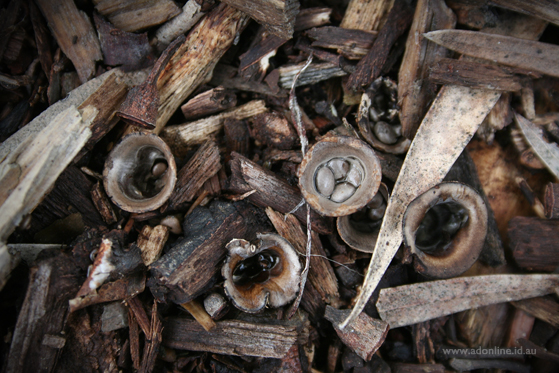
Can you see the bird nest fungi (Cyathus striatus) in this photograph? I thought these look more like gumnuts than birds nests but a close inspection reveals the origin of this species’ common name. The spores (“eggs”) are distributed when droplets of rain fall into the “nest” and push the “eggs” out, which split open and release the spores. This species will live off decaying wood matter (mulch, as seen here), faecies or other decaying plant matter.
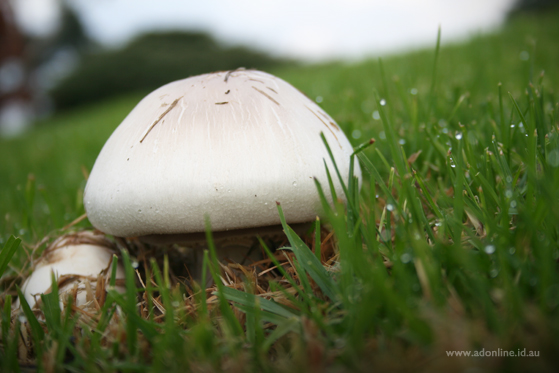
I believe this is Chlorophyllum hortense, growing in a lawn. A common species, often destroyed in its prime by lawnmowers! I found this i a park, where I initially mistook it in the distance for a piece of litter. A second toadstool is emerging beside the first.
The next three species I can tell you nothing about, because I have not been successful in identifying them. Nevertheless, I thought they looked attractive so I took their photos anyway…
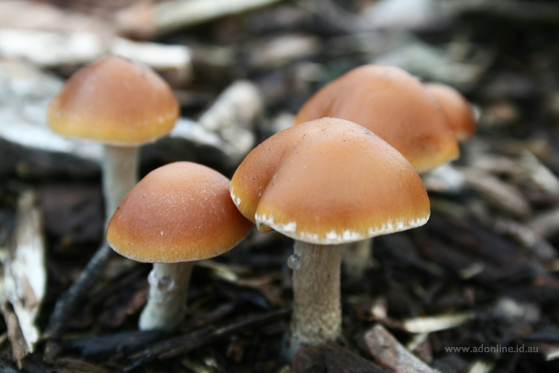
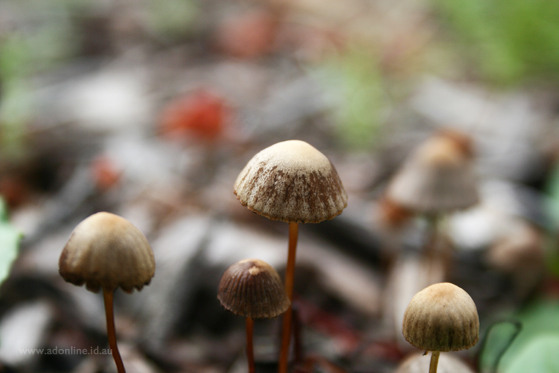
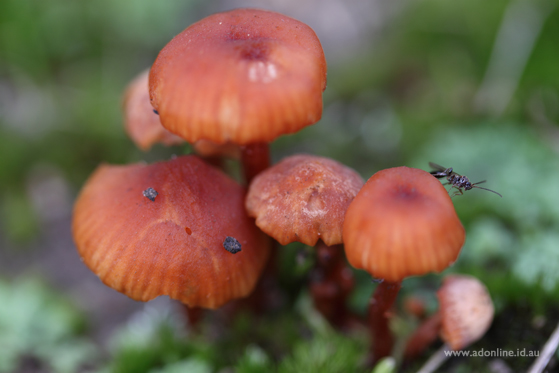
Whilst you’re out and about this Autumn, keep an eye close to the ground. You never know what you might discover!
Comments
2 responses to “Autumn: It’s toadstool season!”
Love these photos – especially the first and the second last.
(also really enjoyed your stick shed post)
The first of ‘the next three species…’ looks to be Psilocybe subaeruginosa.